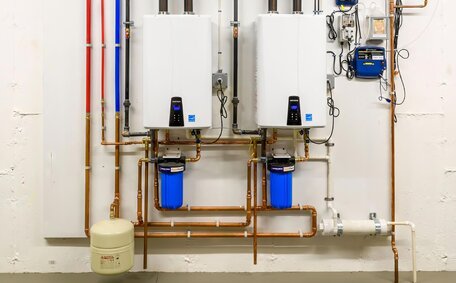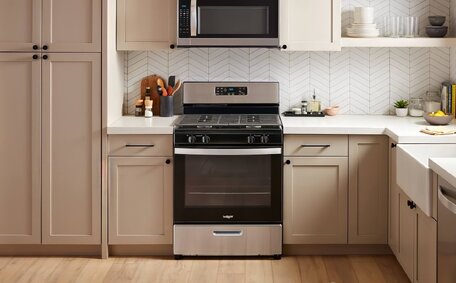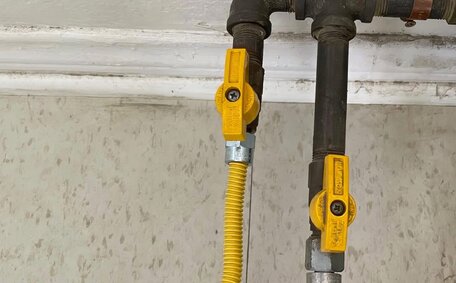
How Hard Water Hurts Hot Water Heaters
Hard water leaves mineral deposits in heaters, pipes and tanks. This limescale reduces efficiency, lifespan and hot water availability. Contact us for affordable water softening solutions.
Read MorePipe relining addresses blocked pipe issues efficiently, circumventing the need for disruptive excavations.
Sewer pipe relining rejuvenates plumbing infrastructure by installing a resin-infused liner to forge a robust pathway within the existing pipe. This relining forms a smooth, corrosion-resistant interior within the existing pipe, preventing blockages and leaks for extended durability.
This method is compatible with a variety of materials, including PVC, concrete, clay, and cast iron, effectively sealing defects. The versatility of pipe relining extends to repairing damage from tree root intrusions and collapses. It significantly prolongs the lifespan of your plumbing, combatting the wear and tear from constant use.
Pipe relining has several benefits over traditional repair methods:
In summary, pipe relining is a streamlined approach that strengthens pipes, improving flow and durability without the upheaval and costs associated with full pipe replacement.
There are several key reasons to consider pipe relining over traditional pipe repair or replacement methods:
Pipe relining is a cost-effective alternative to pipe replacement, incurring only a fraction of the expenses. The benefit of eliminating the need dig through the landscape or disrupt the integrity of floors and walls can lead to substantial savings on labour, all while preserving the aesthetics of your surroundings.
The relining process can solve a range of plumbing issues and enhance the function of properties, including your business, without need for disruptions, as it doesn’t require digging or demolition. This is particularly advantageous for areas with accessibility issues.
Pipe relining can be completed in hours, significantly faster than the days or weeks needed for full replacement. This means there can very be little downtime for occupants and businesses.
Using high-grade epoxy resins, pipe relining can extend a damaged pipe’s lifespan by 50 years or more.
Pipe relining effectively repairs damaged pipes, restoring full operation to plumbing systems of any material and accessibility. It adeptly tackles a range of issues, including root intrusion, cracks, leaks, and collapsed sections in your plumbing system.
In summary, Pipe relining stands out for its affordability, efficiency, durability, and minimal impact on your property. This trenchless repair method features multiple benefits and applications you can explore further.
A thorough CCTV drain inspection is crucial before starting pipe relining, to prepare the pipe adequately. The first step is to conduct an inspection to assess extent damage within the pipe system.
Factors assessed during the inspection include:
Thorough cleaning and preparing the pipe’s surface is essential for optimal liner adherence.
A clean and smooth interior is vital for successful pipe relining.
Once preparation wraps up, aligning with the detailed steps involved pipe restoration, precise measurements are taken to customise the liner material, which is then saturated with epoxy resin before integration into the pristine pipe. Compressed air can assist this insertion and unfolding process so the liner makes full contact with the inner wall.
Proper cleaning and preparation are crucial for successful pipe relining. Our dedicated specialists, furnished with precise cutting tools, ensure the steps involved pipe preparation culminate in superb liner adhesion.
The primary material in pipe relining is a robust epoxy resin, which when used with quality felt liners, creates a new pipe inside the existing one. We deploy advanced epoxy resins as hardening agents, which are two-part liquids blended to initiate hardening via a chemical reaction. Different formulations are used depending on the specifics of the job.
The ideal resin is chosen based on temperature and chemical resistance, strength, setting time, and compatibility with the existing pipe material.
The resin soaks felt liner tubes made from polyester or fibreglass, tailored to fit the pipe snugly. As it cures, this resin-infused liner forms a jointless, seamless new pipe able to withstand pressures and resist corrosion.
Additional materials such as patching fabrics and reinforcement bands may be utilised to bridge gaps and repair holes or cracks, thereby bolstering weak points or tailoring liners for intricate pipe configurations before resin application.
For each unique relining venture, our experts judiciously select materials, carefully contemplating everything from pipe compositions to ecological factors, ensuring a flawless execution that allows strength to grow into the rehabilitated pipes.
The involved pipe relining process encompasses several key steps:
This allows us to determine the customised approach needed.
We meticulously flush out the interior sections pipe used remove impediments with high-pressure water jetting, robotic cutters, root saws and speciality drain agents. Unwanted elements are trimmed, and any damaged section of pipe with breaches exceeding 3mm is meticulously repaired, echoing robust standards similar to processes upheld in New Zealand.
We infuse liners made of polyester felt or glass fibre with specially formulated epoxy to form a new pipe within the old one, effectively using the damaged pipe as a template. This resin-saturated liner forms the new lining, creating a jointless pipe once cured.
Employing the liner inversion technique, the resin-wet liner is inserted into pipe and then filled with epoxy within the host pipe. Compressed air helps fully unfold and expand it for complete adherence to the pipe walls as it cures.
The liner embeds itself within old pipe that is damaged and solidifies in just a few hours. Cure times vary based on resin chemistry, pipe size, and environmental factors. Our experts monitor conditions meticulously until it’s ensured that full curing occurs with no leaks.
After pipe relining, we perform camera inspections and pressure/vacuum tests so any issues come out before we get your pipes restored to function. Enjoy enhanced flow and peace of mind!
Following the cleansing of old pipes, our progress leads to the critically important phase of inserting the new pipe ready liner and overseeing its curing, ultimately concluding with a careful final inspection.
The liner consists of a felt tube made of polyester, fibreglass, or other durable materials that has been pre-cut to the exact measurements of the host pipe. Our craftsmen diligently impregnate the liner with specially crafted epoxy resin, then used to reinforce the structural integrity per the unique demands of the assignment.
Adopting a liner inversion method, we accomplish the task of pipe inserting the new liner, now imbued with durable resin. Compressed air helps to fully unfold and expand the liner so it presses firmly against the inner walls of the pipe.
As the epoxy resin cures, it transforms into a tough, seamless new inner surface within hours. Cure times vary based on pipe size, resin chemistry, temperature, and other environmental factors. Our experts closely monitor conditions throughout to ensure full, proper curing.
Once set, the fresh pipe liner transforms into a robust new layer within old structures, rejuvenating the original conduit with enhanced durability. The epoxy resin creates a protective barrier that is extremely durable, leak and corrosion proof. This reinstates structural damage integrity, flow efficiency, and the operational lifespan of your piping system.
With the liner’s curing complete, the final step entails comprehensive scrutiny and tests to corroborate the repair’s robustness, confirming a defect-free seal and the elimination of leaks.
Our technicians conduct a detailed CCTV inspection to verify the integrity of the relined pipe, ensuring all damage has been properly corrected:
Following inspection, we perform pressure testing to confirm the repair’s integrity under operational conditions. The absence of leakage or drops in pressure certifies both the quality of the liner installation and the structural integrity of the pipe, ensuring a tidy clean up of the entire process.
We ensure that only after confirming the relined pipe’s integrity through rigorous tests do we clear it for regular use. Through relining contact us for restored function, and gain peace of mind knowing that your drain is in optimal working condition, leak-free, free of obstructions, and reliable for decades ahead.
Pipe relining is suitable for almost all types of piping materials, an essential factor for understanding its application, even for broken pipes. Common pipe types that are suitable for relining include:
We determine factors like age, extent of wear, type of damage, and material integrity. This allows us to select the ideal resin and customise the liner tube accordingly for optimal adherence and performance.
In essence, water pipes transporting liquid or gas are prime candidates for renovation using pipe relining. Our team specialises in making this trenchless technology work for all kinds of tricky piping systems.
Relined drain pipes can go through extreme conditions and remain extremely durable and long-lasting. The epoxy resins used to reline pipes are corrosion-proof, providing excellent protection against being damaged over time.
Most pipe liners can last for over 50 years, leading many to inquire: how long does pipe relining last? Some may surpass 80 years under optimal conditions. Compared to traditional piping materials, relined pipes can offer vastly extended performance and longevity, lasting beyond the typical 30-50 years.
The continuous, seamless liners enhance durability, reducing the risk of breaks or leaks from weak points in the system. The liner also shields your existing pipes within the property from further corrosion or damage. This method averts various complications that usually necessitate pipe overhaul, thus conserving funds on averting future leaks.
Relined pipes have proven their durability even under harsh conditions. High-temp epoxy liners withstand over 300°F heat, easily coping with steam lines or commercial kitchen drainage. Cold-cure liners perform reliably even in freezing subzero environments.
In summary, relined pipes offer unmatched durability and lifespan for a pipe repair solution. Their exceptional strength and corrosion resistance deliver reliable long-term pipe function with less need for repeated repairs over time. Investing in proactive pipe relining can pay dividends for decades to come.
Hard water leaves mineral deposits in heaters, pipes and tanks. This limescale reduces efficiency, lifespan and hot water availability. Contact us for affordable water softening solutions.
Read MoreIt’s important to routinely check your gas appliances for any issues. Signs of problems include gas leaks, strange sounds, odd smells and more. Have a professional inspect your gas appliances annually and service them regularly for safety.
Read MoreUpgrading your gas meter is a simple process completed by registered technicians. It involves disconnecting your gas supply for 15 minutes to swap the old meter for a new digital smart meter. The upgrade is free and improves accuracy.
Read MorePicnic Point, 2213 NSW
We will call back as soon as possible.




